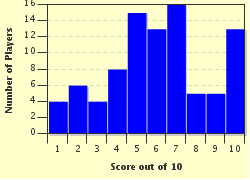Quiz Answer Key and Fun Facts
1. The International Red Cross and Red Crescent Movement is actually formed of several organizations. Which of these would NOT be one of those?
2. The year was 1859. Having traveled to Solferino, Italy, Jean-Henri Dunant arrived on June 24, as a battle was being fought in the Second Italian War of Independence. Some 40,000 soldiers were wounded or dead and left on the field. He tried to care for the wounded and find treatment for them. When he returned to his home in Geneva, Switzerland, what book did he write and publish about the experience?
3. The Geneva convention held in 1863 included delegates from several national governments. Which of these countries did NOT attend?
4. Which of these was NOT an activity that the International Committee of the Red Cross (ICRC) was involved with during World War I?
5. In 1919 the League of Red Cross Societies was founded by Henry Davison, then President of the American Red Cross. What additional service(s) did this provide?
6. In World War II, Germany refused International Red Cross and Red Crescent delegates access to concentration camps until 1945. What stipulation was required of the delegates before they were allowed access?
7. There have been many proposals for additional emblems for the International Red Cross and Red Crescent Movement. However, most have been denied official status because of the concern of too many emblems negating the power and protection of a few. Which of these is NOT an official emblem?
8. In 1941 the American Red Cross adopted "Angels of Mercy" as their official war song. Which of these composers created the song?
9. Dr. Charles R. Drew protested against racial segregation of donated blood. From February 1941 until August 1945 the American Red Cross worked with Dr. Charles R. Drew on which program?
10. In the US, the Red Cross is the largest supplier of blood and blood products. Which of these was NOT implemented by the Red Cross to insure blood supply?
Source: Author
mlcmlc
This quiz was reviewed by FunTrivia editor
bloomsby before going online.
Any errors found in FunTrivia content are routinely corrected through our feedback system.


